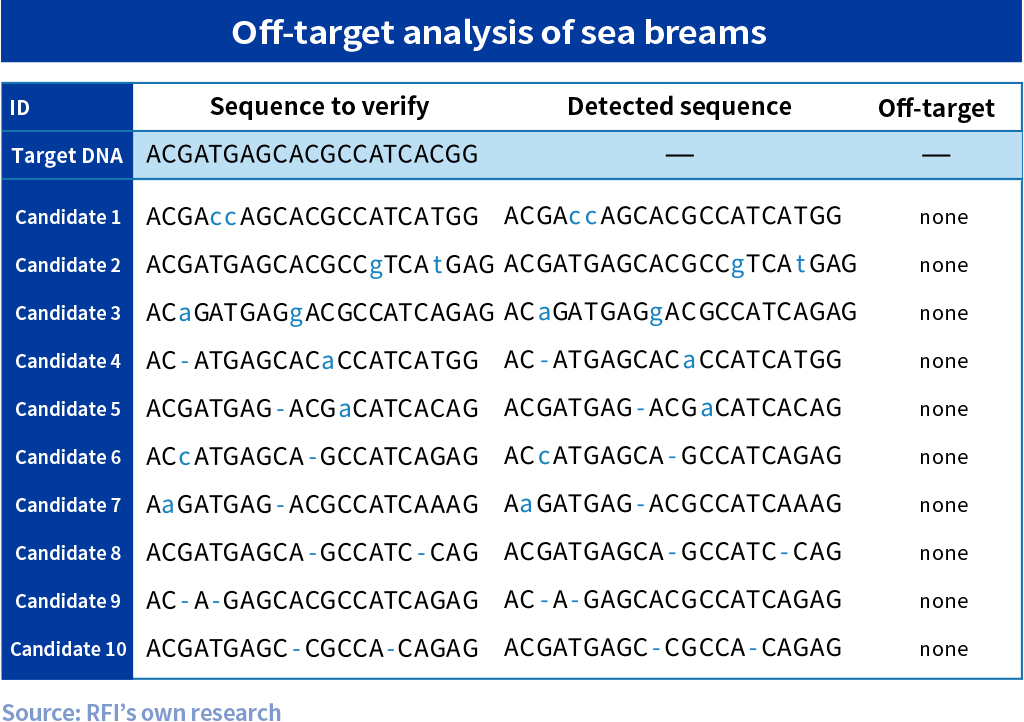Improved breed in aquaproducts are rarely available in the market.
Most of what we eat today are bred over the long years of effort. However, when it comes to aquaproducts, only a limited varieties of improved breed are available in the market. Given that the breed improvement in aquaproducts has only 50 years of history, “SPEED” is the key for the technology to catch up.
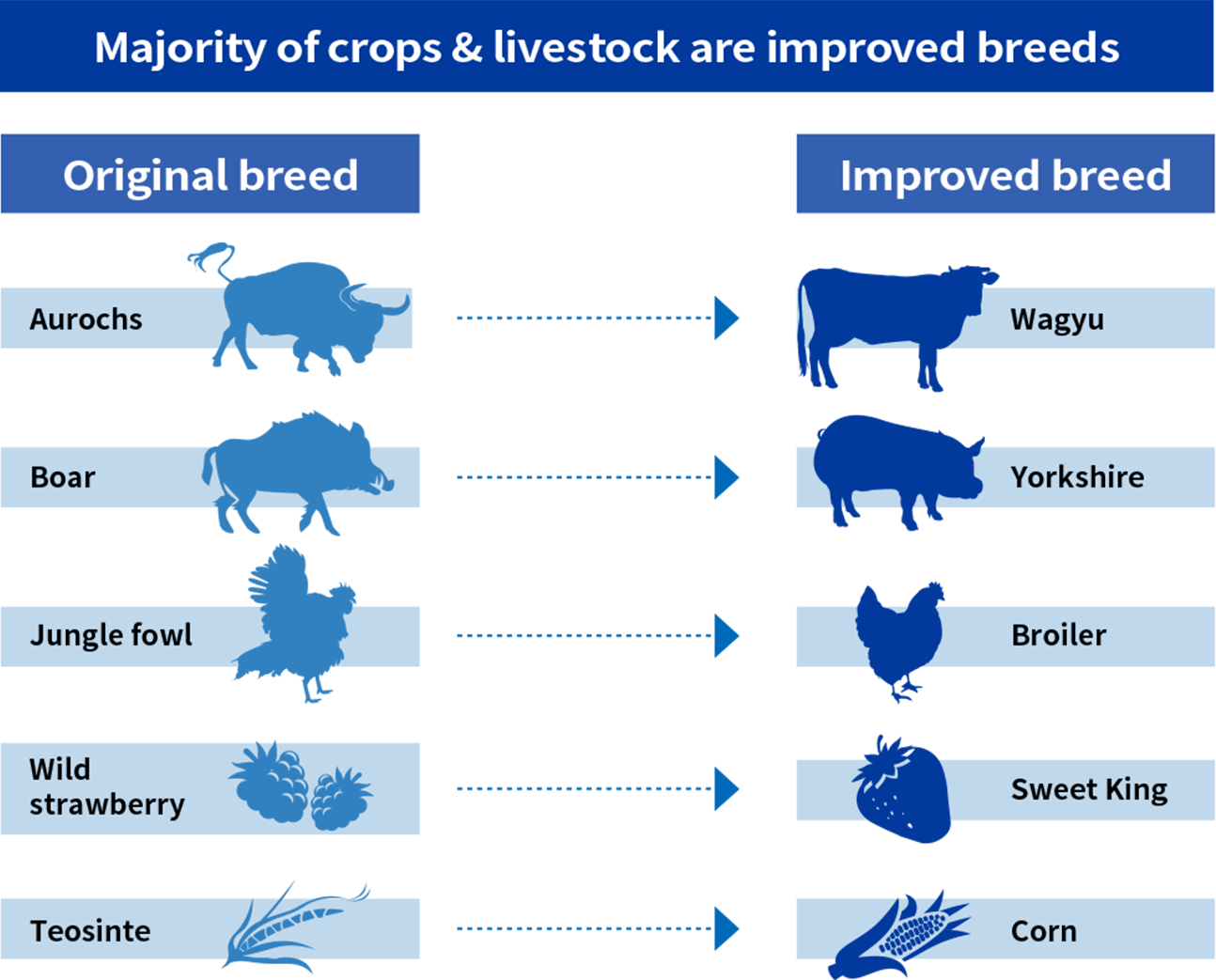
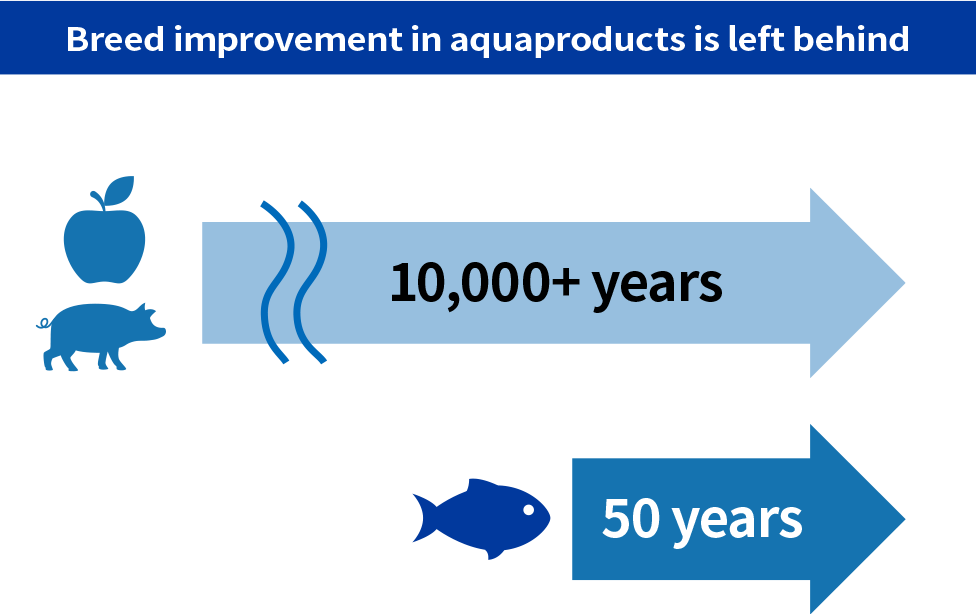
Genome editing can fast forward the breeding process from 30 years to 2 years.
Current breeding is done based on selective breeding method to select and cross breed the desired traits that occurred by spontaneous mutation. Radiation and chemicals are used to accelerate the process, however, it still requires a lot of time and effort. Genome editing, on the other hand, can develop a new breed in only 2 years.
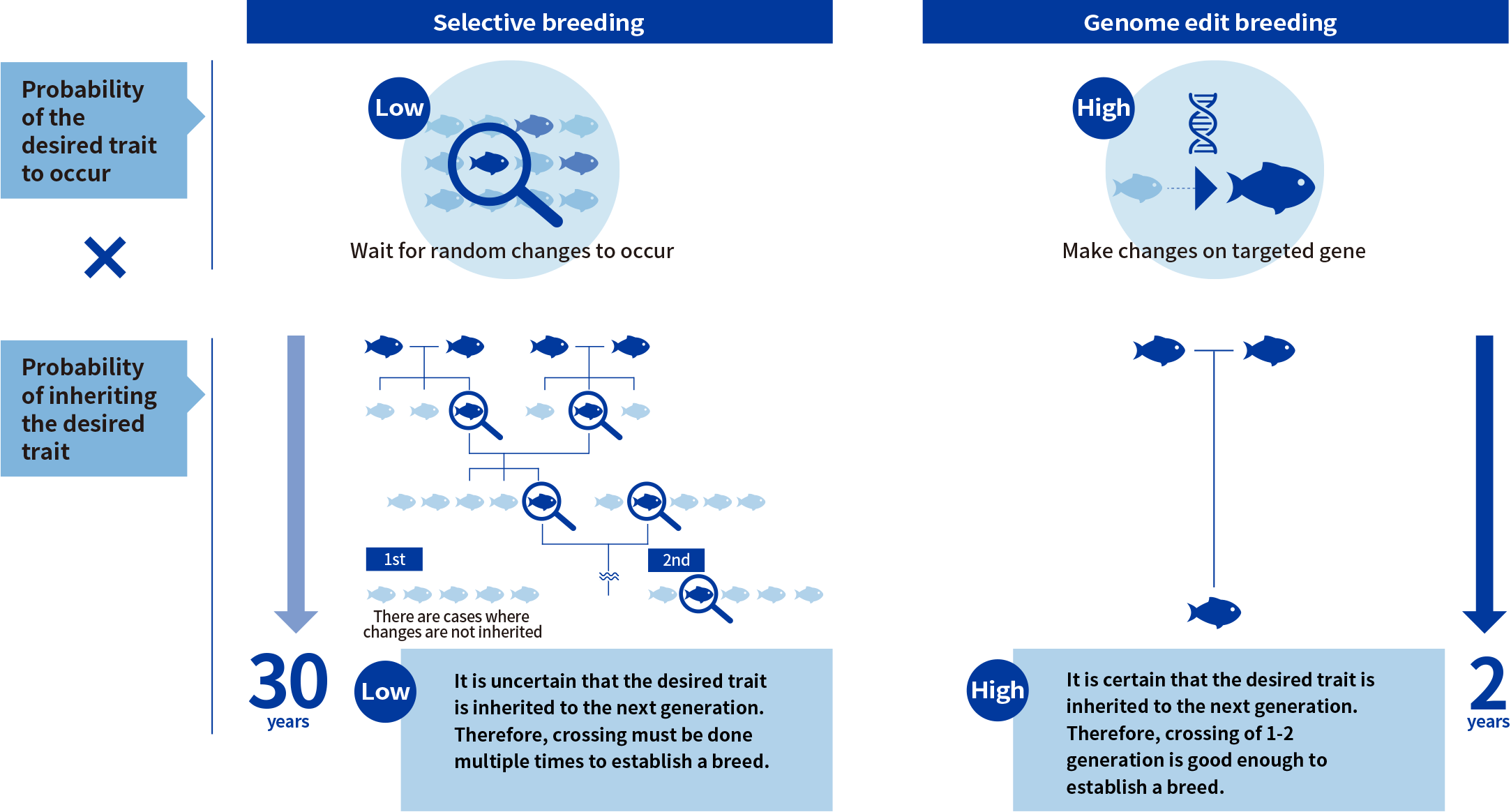
Genome editing only promotes natural evolution that takes place in the wild.
Our genome editing technique drives changes by deactivate the target gene function. Unlike GMO, this method does not require introducing foreign genes. In other words, the newly born fish can be found in nature as well.
The average number of the genetic differences among the wildtype sea breams are about 7.5 million which is approximately 1% of the whole genome. Therefore 1 genetic change that we make is within the randomness of natural occurrence.
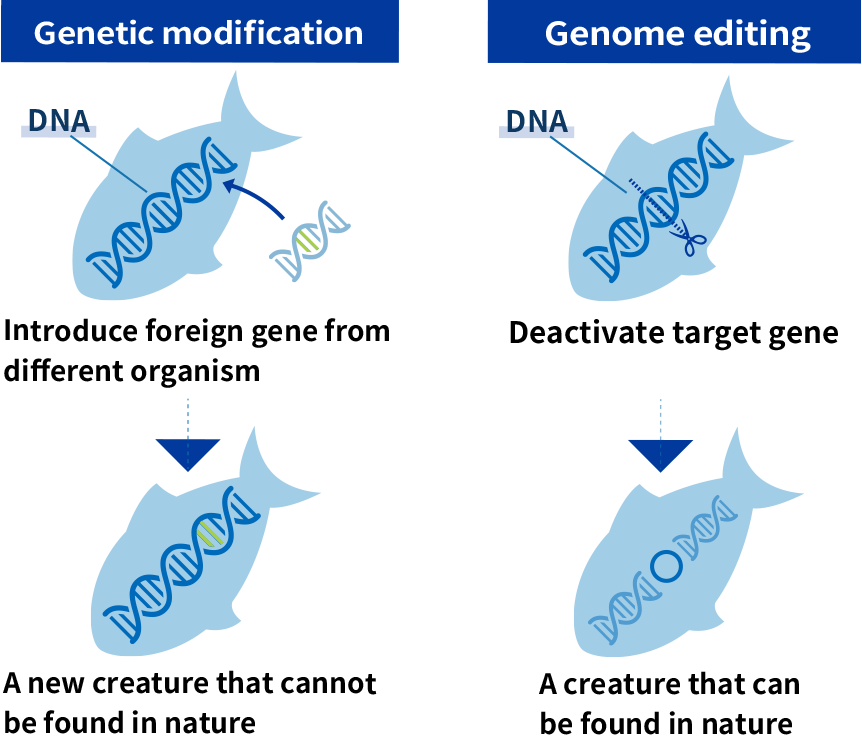
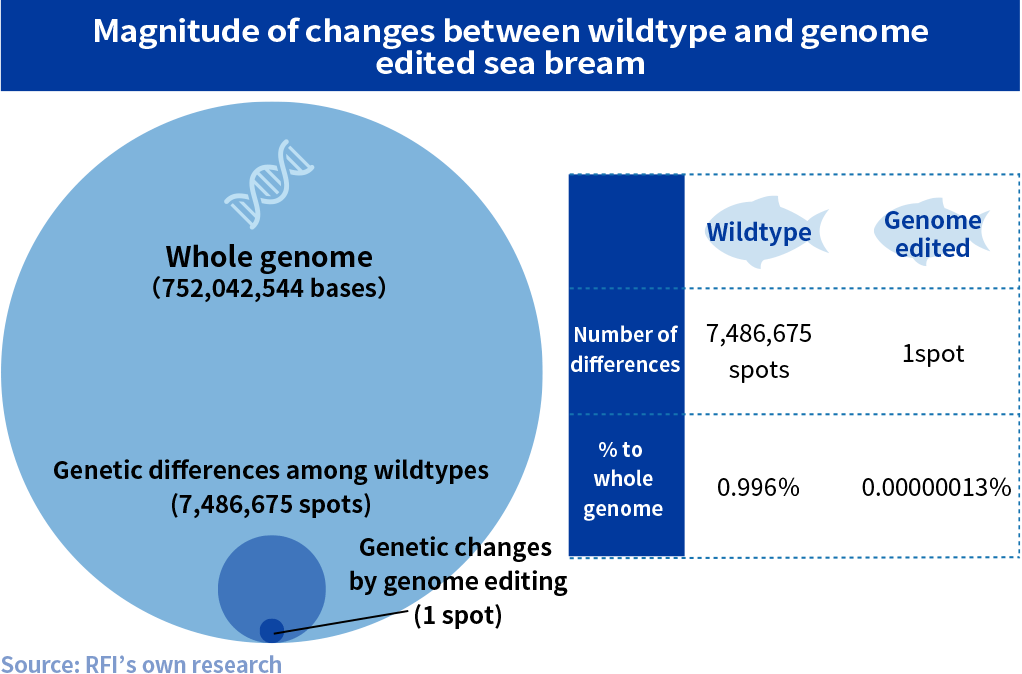
Our genome editing technique is proved to be safe.
Our genome editing technique deactivates a targeted gene only, which is safer than the traditional selective breeding where mutation occurs at random. We have conducted the following analyses, and no safety issues were detected; off-target analysis, allergenicity prediction, and detection analysis of residual genome editing tools.
